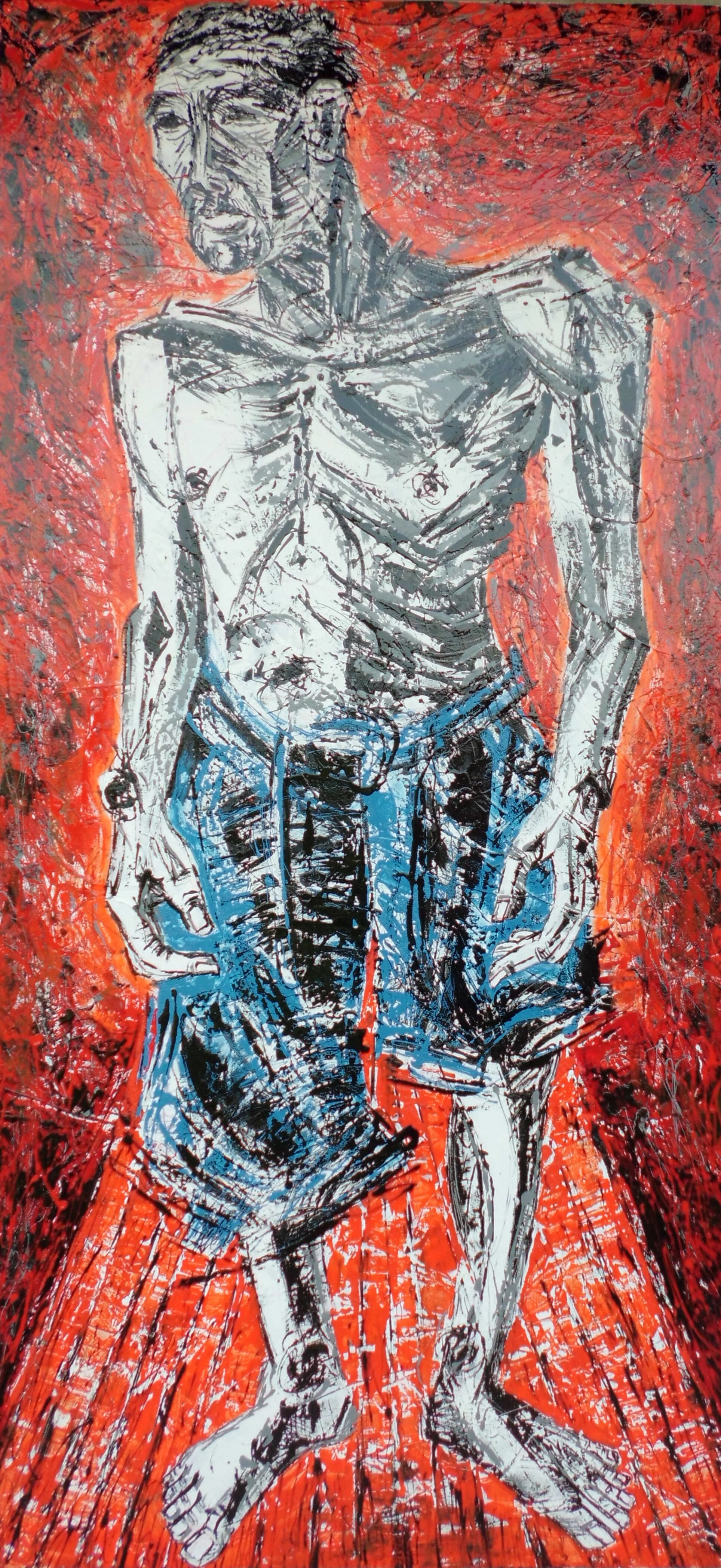KAMOL TAMSEEWAN CV
Kamol portraitures put him on the fine line between abstract and traditional portrait painting whereby the artist attacks the canvas, by dragging and dropping paint precisely onto the canvas, a step too close the viewer might mistake it as an abstract painting and only by playing with the distance will the viewer realize how the explosive colours are contrasting each other just like how the way the each of his brush strokes contemplates his other.
‘The Power of Life’ series offers an expressive study of emotions amassed as a result of everyday human struggle. It presents a bold and resolute declaration of the emotional life of local, ordinary folk, including farmers, labourers, and villagers, who are confronted by concrete as well as intangible conditions and socio-economic limitations exerted over their day‐to‐day strivings. The works bring us along the artist’s journey and quest to discover how one might live free from such shackles and unearth the true fountainhead of authentic inner freedom.
Kamol looks to subjects close to his heart for this body of work. Its subjects are people he has grown up with and among, whose lives, feelings, and experiences constitute the material he has undertaken to know and relay through his work. “My inspiration comes from living experience. I paint beings I have seen,” says the artist. Like Affandi, the late Indonesian expressionist master he admires, Kamol’s chosen struggle lies in becoming a human artist, to feel “enough as a human”. Thus, his bold thesis: “Life’s learning lies in expressing the life [lives] of other lives.”
His method of study comprises the work of arriving at and creating riveting portrayals of ordinary individuals, based on a conjecture that each person exhibits different measures of physical expressivity and emotionality in response to their everyday struggles. Like the chosen mode of his work – a semi‐abstract expressionism that tries to find an effective balance between the abstract and the figurative – this quintessentially creative quest for freedom straddles the in‐between: it involves a systematic and, at its core, deeply humanistic creative process (praxis) that, whilst informed by a distinctively high ideal, is nevertheless conducted through pragmatic, realistic means of fieldwork, often in the form of painstakingly in‐depth interviews. Encounters and experiences of others are internalised and sifted through the artist’s cognitive and perceptual instincts, then distilled into their irreducible emotional quotients.
With strong and affecting human structures as their subjects, Kamol’s works demonstrate the vibrancy and power of inner feelings to drive human life. Through the course of his study and search for inner freedom, Kamol, following his unwaveringly keen and close observation of so many different characters, arrives at this maxim: everything that comes to pass hinges on one’s mental condition and emotions, the constant fluctuations of which are the only true reminders of life.

















